
2EXCIPIENTS
Behavioral Concerns: Are Artificial Colors to Blame?
5 min read

Essentials
- Studies suggest that artificial colors may affect up to 8% of young adults with attention challenges, potentially impacting over 500,000 individuals in the U.S.*
- Young adults consume artificial colors three times more frequently than adults, primarily through drinks, highlighting the need to consider limiting exposure and exploring dye-free alternatives.*
Colorful nootropics and gummy multivitamins. Multicolored sweets and sodas. Most of these (and many more) owe their eye-catching shades to artificial food colors. But beyond the obvious allure of these colors lies a spectrum of concerns.
So, are you one of those questioning if your loved ones are exposed to excessive amounts of these artificial excipients and additives? Are you unsure if that artificial color may actually be responsible for hyperactivity and impulsiveness? And how much is too much? Here's what you need to know:
Artificial colors are primarily used for aesthetic purposes.
Artificial colors offer no nutritional value. Period. However, many brands use artificial dyes as an inexpensive way to enhance the visual appeal of their nootropics (and other dietary supplements).
Now, let’s be clear: Artificial colors CAN be used. In fact, the Food and Drug Administration (FDA) permits nine distinct artificial colors in nootropics (and foods).1 Some of the most common ones you'll likely spot on labels include:*
- FD&C Red #40 (often called Allura Red)
- Yellow #5 (also known as Tartrazine)
- Yellow #6 (Sunset Yellow)
- Blue #1 (Brilliant Blue)
So, if it’s allowed, why do we at HCF® avoid using artificial colors in our advanced nootropics? Because the evidence supports a relationship between artificial dye exposure and adverse behavioral outcomes in young adults, both with and without pre-existing behavioral issues.*
Some young adults can be sensitive to artificial food dyes.*
Now, while not every young adult sensitive to artificial colors may develop an attention challenge, and not all young adults that have trouble concentrating may react to certain artificial colors, existing data links artificial colors to behavioral challenges in young adults with attention challenges.*
Here's an example: A 2012 study suggests that artificial colors may affect up to 8% of young adults with an attention challenge—that's over 500,000 young adults in the United States alone.*2
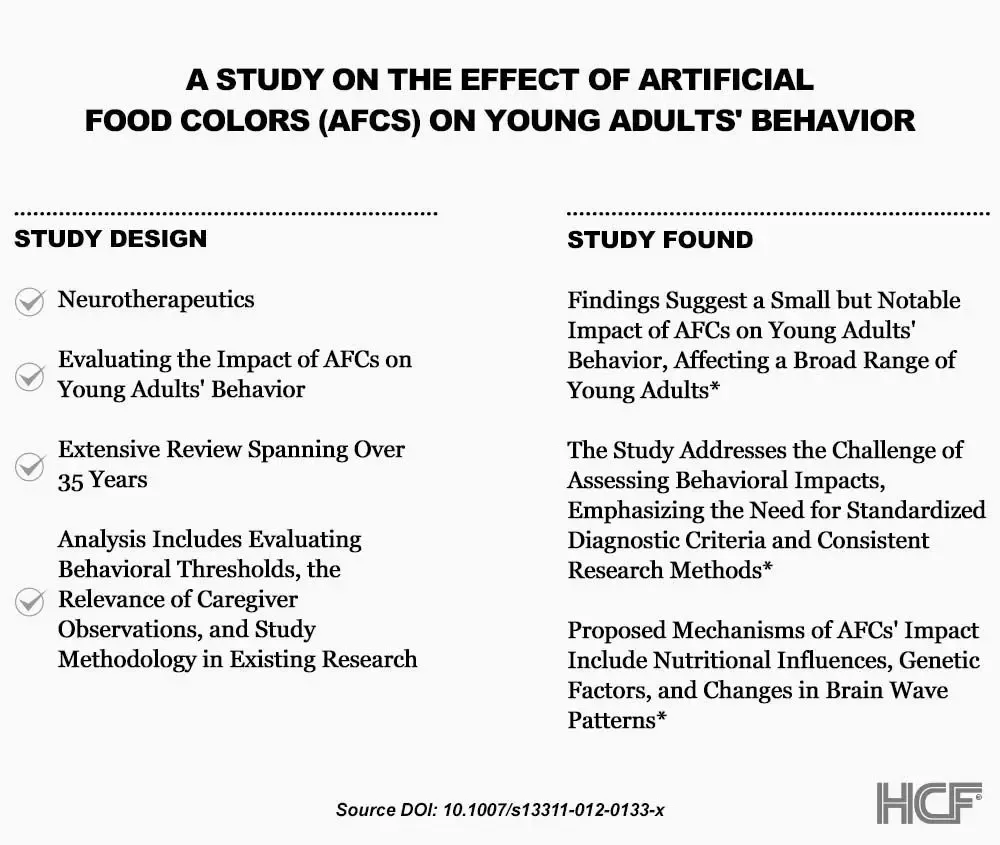
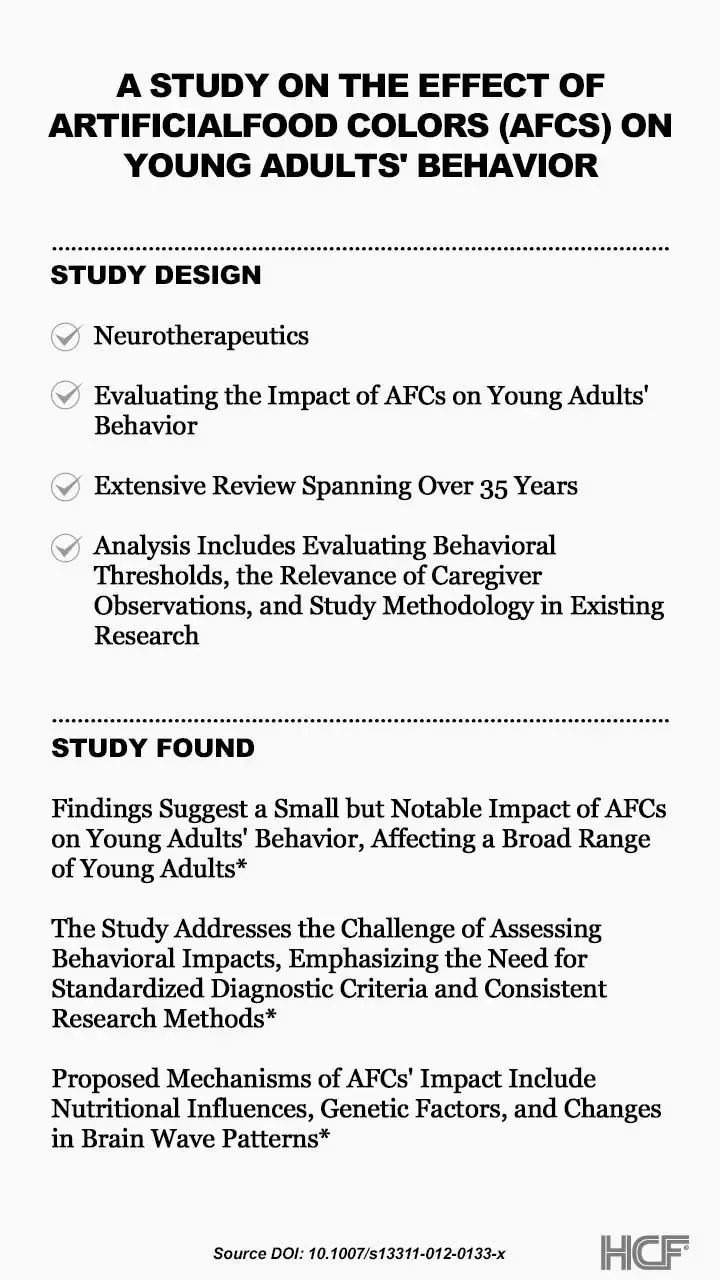
Considering artificial dyes may also impact those without a known attention challenge (even if just a tiny percentage of about 0.5% or lower), that could lead to behavioral challenges in another 250,000 young adults in the United States.*
What science says.
In 2011, the FDA assessed the potential connection between artificial colors and hyperactivity, concluding that “no direct link was evident for young adults in the broader population without behavioral issues.” This position was reaffirmed in 2019.*3
However, newly compiled research may suggest that artificial colors (like Red #40, Yellow #5, or Blue #1) can adversely impact many young adults.* And people have the right to be informed.
An April 2021 peer-reviewed report from California, with input from UC Berkeley and UC Davis, validated the long-held suspicion that consuming artificial dyes may induce hyperactivity and other neurobehavioral challenges in certain individuals.*4
→ "Evidence shows that artificial dyes are associated with adverse neurobehavioral outcomes in some young adults," said California Environmental Protection Agency's Office of Environmental Health Hazard Assessment (OEHHA) Director Lauren Zeise. "With increasing numbers of US young adults diagnosed with behavioral challenges, this assessment can inform efforts to protect young adults from exposures that may exacerbate behavioral problems."*
This study also highlighted that the federal guidelines on safe consumption levels of these dyes may be outdated.*
A separate 2007 investigation by the University of Southampton (United Kingdom), identified a potential correlation between specific artificial color mixes and increased hyperactivity in young adults, including those without an attention challenge.*5
Such findings prompted the European Union to restrict the use of many artificial dyes. While not entirely prohibited in Europe (post the 2007 research) the EU mandated warning labels on products with certain artificial dyes, indicating potential impacts on challenges with focus, hyperactivity and impulsiveness.*6
Young adults consume artificial colors three times more frequently than adults.*

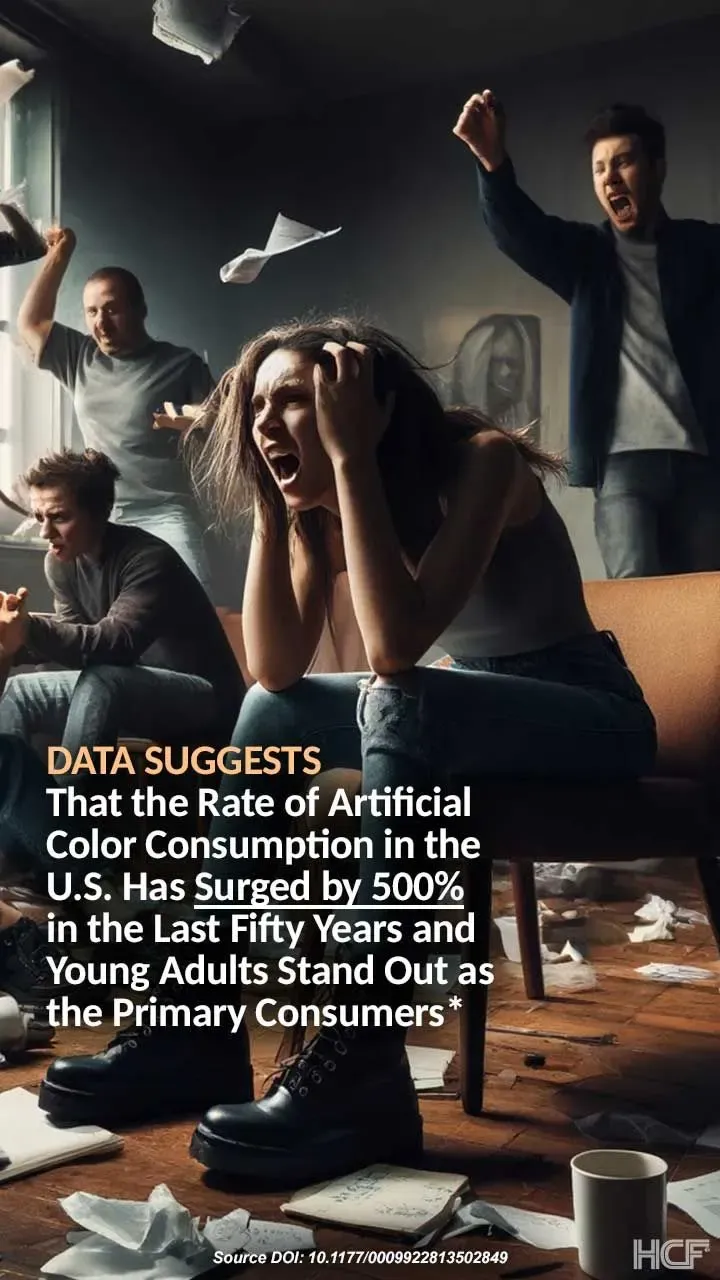
Every day, 74 million American young adults ingest artificial dyes—equivalent to a staggering 2,000 gallons. Drinks remain the predominant source due to the substantial quantity consumed per serving. But other foods, multivitamins, and even many nootropics still contain significant amounts of artificial colors.*
And there’s more.
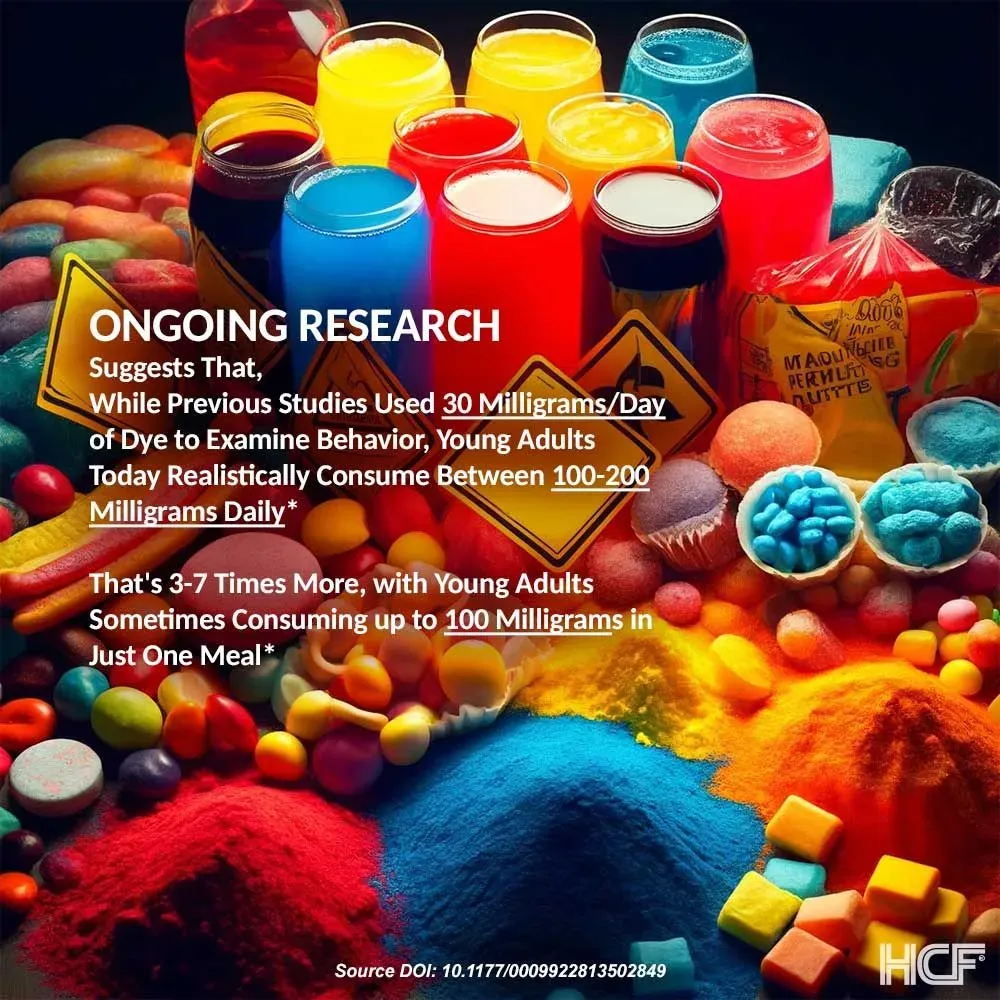
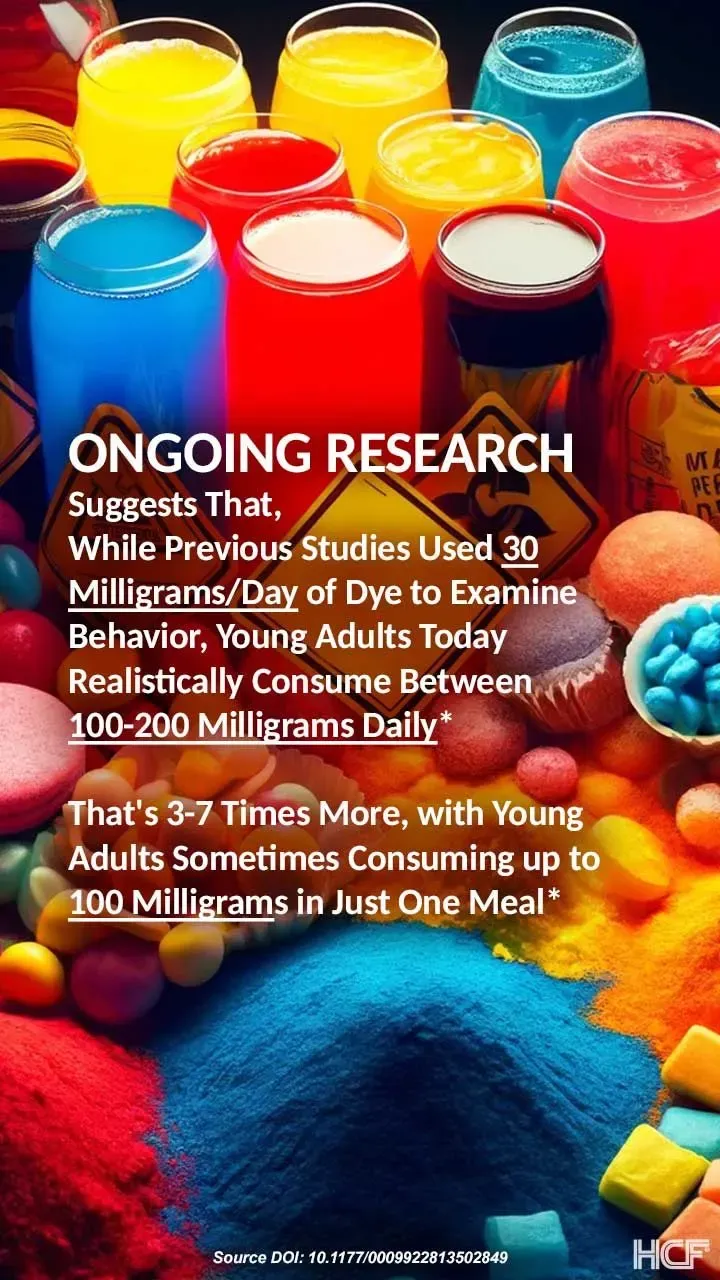
Should you limit your loved ones' exposure to artificial food colors?
After thoroughly reviewing the research, that’s completely up to you!
For those who may react to artificial food colors, it would be prudent to consult a medical doctor to see if curtailing consumption or having minimal contact would be best. Ideally, you may want to keep the intake of artificial colors as low as possible and consider reviewing dietary intake or exploring dye-free alternatives.
Additionally, when choosing a nootropic, seek one without added artificial colors and other unnecessary fillers, binders, and additives.